piano
Alford - Colonel Bogey March, arr. for Flute/Piccolo, Cello & Piano
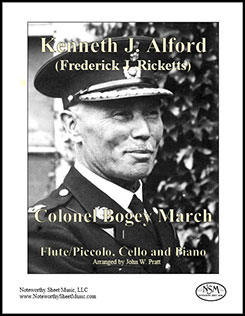 Colonel Bogey March by Kenneth J. Alford (Frederick J. Ricketts)
Colonel Bogey March by Kenneth J. Alford (Frederick J. Ricketts)
Arranged for Flute/Piccolo, Cello and Piano by John W. Pratt (originally for military band)
Score and Parts for Flute/Piccolo and Cello, PDF $13.99
The Colonel Bogey March was composed in 1914 by the British Army bandmaster Frederick J. Ricketts, who published under the pseudonym Kenneth J. Alford. Having since appeared in a variety of famous films and TV shows, the tune will surely be familiar to most. As originally written for military band, the piece is best performed outdoors or in a very large hall. John Pratt has created an arrangement for an ensemble suitable to smaller spaces ... a trio of flute/piccolo, cello, and piano can cover the musical essentials just fine and provide desirable tonal variety to boot. For amusement, while also allowing time for the flutist to switch between flute and piccolo, Pratt has inserted a few short “what’s-that-tune?” passages, making for an especially entertaining adaptation of Ricketts’ composition.
Score, 14 pages; Flute/Piccolo part, 3 pages; Cello part, 3 pages; Total, 24 pages.
PreviewAltès - Premier Solo pour La Flûte - Flute & Piano
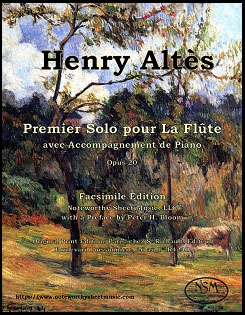 Premier Solo pour La Flûte, Op. 20, by Henry Altès
Premier Solo pour La Flûte, Op. 20, by Henry Altès
Facsimile Edition by Noteworthy Sheet Music
with a Foreword by Peter H. Bloom
Flute Part and Piano Score, PDF $12.75
Henry Altès (1826-1899) is primarily remembered today as the author of a particularly useful Méthode Complète de Flûte (1906), yet his impact on fellow flutists for nearly a century-and-a-half can hardly be overestimated. A student of the Boehm flute pioneer Louis Dorus, Altès succeeded Dorus as Professeur au Conservatoire de Parisupon upon the latter's retirement in 1869 and served in that capacity for a record twenty-eight years. Premier Solo pour La Flûte was dedicated to Louis Dorus, and was the first of ten Morceaux des Concours that Altès would write for the annual Paris Conservatory competition. That this was the only one of the ten to have been required in two contests speaks to its endearing durability. (excerpted from the foreword by P. H. Bloom)
The NSM edition of the Premier Solo pour La Flûte avec Accompagnement de Piano by Henry Altès is an “enhanced” facsimile of the original print publication from Paris, chez S. Richault, Editeur, Boulevard Poissonniere, 26 au 1er, R4241. We used an image editing program to clean up digital scans of the original printed pages and make a few minor modifications and corrections, as noted in our publication. We have added a new cover page (paying tribute to Altès’ birthplace of Rouen with a painting by Gauguin) and a foreword by Mr. Bloom, but the music has not been re-notated and thus remains in the original style and format; please have a look at the free preview pages provided before ordering.
Piano and Flute score, 12 pages; Flute Part, 5 pages; Total, 22 pages.
PreviewBach - Toccata, Adagio, and Fugue - Piano
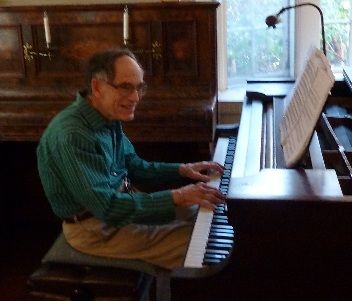 Toccata, Adagio, and Fugue, BWV 564, by J. S. Bach
Toccata, Adagio, and Fugue, BWV 564, by J. S. Bach
Transcribed for Piano by John W. Pratt, PDF $14.84
BWV 564 is unusual among Bach's big organ works. It has a middle movement, an Adagio with an elaborate and gorgeous melody which can benefit greatly from the piano's shaded, nuanced dynamics and articulation. The fugue, too, is atypical - light and lighthearted, well suited to the piano, with a fading coda that is if anything harder to treat convincingly on the organ than on the piano. The exuberant Toccata is also highly effective and fun to play on the piano.
Piano part, 15 pages; Total, 17 pages.
PreviewBeach - 3 Compositions - Alto Flute & Piano
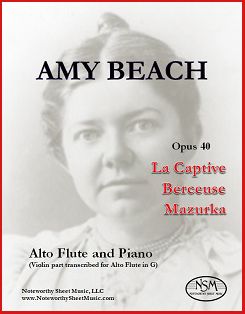 3 Compositions, Op.40, by Amy Beach
3 Compositions, Op.40, by Amy Beach
Transcribed for Alto Flute and Piano by C.A.Vater
Piano Score and Alto Flute Part, PDF $10.50
Amy Marcy Cheney was born in Henniker, New Hampshire in 1867 and began composing music at the age of four. Initially home-schooled as a pianist, she continued her music studies in Boston and made her professional debut as a pianist at age 16. She later became a soloist with the Boston Symphony Orchestra. At 18, she married the prominent Boston physician Dr. Henry Harris Aubrey Beach and began using "Mrs. H. H. A. Beach" as her professional name. She continued to perform occasionally as a pianist, but for many years she focused her musical skills primarily on composing. After her husband's death in 1910, Mrs. Beach resumed her performing career, beginning with a three year tour of Europe, while also continuing to write music. Her works were received with great acclaim, and Amy Beach became one of America's leading composers and the first American woman composer to achieve widespread recognition in the United States and abroad. During her lifetime, she wrote more than 150 numbered works, spanning a variety of genres that included piano pieces, chamber music, orchestral works, sacred choral music, and a great many songs.
Amy Beach's 3 Compositions for Violin and Piano, Op.40, were first published in 1898. Written in the romantic style, the three pieces are (1) the beautiful but sombre La Captive, (2) a lovely, lyrical Berceuse, and (3) a lively but still tender Mazurka. In addition to alto flute transcriptions of all three pieces, we include in our edition a version of the Mazurka transcribed for flute and piano (score and part), for those wishing to give this option a try as well.
Alto Flute part, 4 pages; Piano/Alto Flute Score, 10 pages; Alternate "Mazurka" Flute part, 2 pages; "Mazurka" Piano/Flute Score, 5 pages; Total, 29 pages.
PreviewBeach - Ecstasy - Voice (or Afl), Alto Flute (or Cl), and Piano
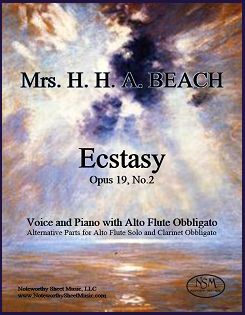 Ecstasy, Op.19 No.2, by Mrs. H. H. A. Beach
Ecstasy, Op.19 No.2, by Mrs. H. H. A. Beach
Two versions, for "Low voice (in Db)" or "High voice (in Eb)", with Alto Flute Obbligato (transcribed) and Piano.
Alternative parts for Alto Flute Solo and Bb Clarinet Obbligato.
Program Notes by Peter H. Bloom.
Piano Scores, Voice Parts, Alto Flute Obbligato Parts, and alternative Alto Flute Solo Parts and Clarinet Obbligato Parts; PDF $8.99
Noteworthy Sheet Music was thrilled to publish our edition of Amy Marcy Cheney Beach's song Ecstasy in 2017, in celebration of the 150th anniversary of the composer's birth. The idea to make Ecstasy available to a broader combination of players and singers came from flutist Peter H. Bloom, who proposed that the piece would be an excellent vehicle with which instructors might inform students (early and advanced alike) about interpretation of the highly romantic late 19th century idiom. To that end, we have packaged together in a single edition Mrs. H. H. A. Beach's two versions of Ecstasy, for "low voice (in Db)" and "high voice (in Eb)", with each version including transcriptions of the obbligato (originally for violin) for either alto flute in G or clarinet in Bb, and an alternative solo part in the form of an alto flute transcription of the voice line. Thus, multiple performance variations are possible, including high or low voice and piano with either alto flute or clarinet obbligato, or fully instrumental versions for alto flute and piano, or two alto flutes and piano, or alto flute, clarinet, and piano.
Scores, 8 pages (4 pages each version); Voice parts, 2 pages (1 page each version); Alto Flute Obbligatos, 2 pages (1 page each version); Clarinet Obbligatos, 2 pages (1 page each version); Alto Flute solo parts, 2 pages (1 page each version); Total, 20 pages.
PreviewBeach - Romance, trans. for Flute & Piano
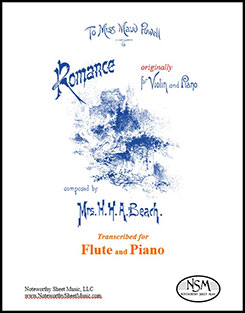 Romance, Op.23, by Mrs. H. H. A. Beach
Romance, Op.23, by Mrs. H. H. A. Beach
Transcribed for Flute and Piano by C. A. Vater (originally for violin and piano)
Piano Score and Flute Part, PDF $8.99
Amy Marcy Cheney, who used Mrs. H. H. A. Beach as her professional name after marrying a Boston physician, began composing music at the age of four; throughout her lifetime she wrote more than 150 numbered works spanning a variety of genres. Her pieces were received with great acclaim, and she became one of America’s leading composers and the first American woman composer to achieve widespread recognition in the United States and abroad. She was also a renowned concert pianist. Beach composed her Romance for Violin and Piano in 1893 for the occasion of the Women’s Musical Congress held the same year in Chicago during the World’s Columbian Exposition. The piece was dedicated to the celebrated violinist Maud Powell, who joined Beach for the premiere performance at that Congress. Highly romantic, melodic, charming, and passionate, the Romance is also technically complex yet graceful. With a few modifications of the violin line, this gorgeous piece works nicely on flute; we provide both our NSM transcribed flute part and a score for flute and piano.
Score, 8 pages; Flute part, 2 pages; Total, 14 pages.
PreviewBeethoven - Adelaide - Flute & Piano
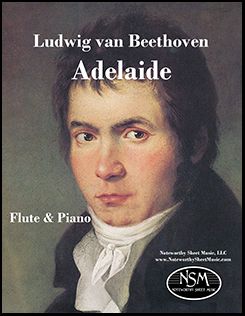 Adelaide, by Ludwig van Beethoven
Adelaide, by Ludwig van Beethoven
Anonymous Arrangement for Flute, each edition with a Foreword by P. H. Bloom
New Edition, Flute Part and Piano Score (flute part in small staff) – PDF $10.50
Facsimile Edition, Flute Part and Piano Score (original with clarinet part in small staff) – PDF $8.25
Beethoven completed his musical setting for Friedrich von Matthison's poem Adelaide in 1796. The song quickly became a favorite interpretive vehicle for instrumentalists as well as singers. Clarinetist Iwan Müller's "bel canto" treatment, essentially the original melody with added ornaments, cadenzas, and interpretive notations, remained a favorite among concertizing clarinetists for more than a century. It's likely that Müller's work informs the anonymous arrangement for flute, published by Diabelli in the second quarter of the 19th century, that we present here .... This anonymous paraphrase of Adelaide is a masterful study of the subtle nuance and passionate restraint of "bel canto" instrumental praxis. (excerpted from the foreword © by P. H. Bloom)
After offering our facsimile edition of Adelaide for some time, we decided to create a newly-notated modern edition as well. We love (and perform) this piece so much, that we didn't want anyone to forgo an opportunity to acquaint themselves with it merely due to the 19th century presentation of the facsimile. Now, there is a choice between the facsimile edition and a modern edition, the latter of course having the flute part in small staff in the score.
Preview================
Benavides - Eduardo Ocón y Rivas - Piano
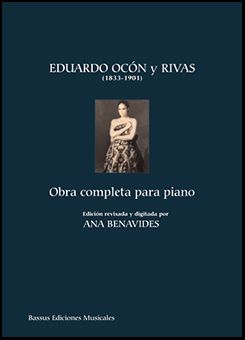 Eduardo Ocón y Rivas—Obra completa para piano
Eduardo Ocón y Rivas—Obra completa para piano
Compiled and Edited by Ana Benavides
Solo Piano, Print Edition, 61 pages, paperback, $21.99
Eduardo Ocón was one of Spain's most notable musical personages of the 19th century—an organist and composer, as well as the founder and director of the Malaga Conservatory. This book, Eduardo Ocón y Rivas—Obra completa para piano (copyright © 2007), is a compilation of the complete piano works of Eduardo Ocón, edited, renotated, and with an introduction by Ana Benavides. The works are rare masterpieces of Spanish piano music that have been rediscovered and reprinted in an edition formatted to facilitate reading by professionals and aficionados at any level. Here is a list of the works included in this anthology:
- Rapsodia Andaluza, Op.9
- Recuerdos de Andalucía, Bolero de Concierto, Op.8
- Rheinfahrt. Estudio Fantástico
- Gran Vals Brillante
- Meditación
- Estudio-Capricho para la mano izquierda, Op.10
- Amor inmortal
- En la playa. Barcarola
Ana Benavides is an internationally acclaimed pianist and Steinway Artist who has performed recitals in Europe, Australia, South America, and North America. A regular visitor to international festivals both as soloist and chamber musician, she has maintained a keen interest in rare Spanish piano music of the 19th century. Visit www.anabenavides.com to learn more about the artist and her work.
Eduardo Ocón y Rivas—Obra completa para piano was published by Bassus Ediciones Musicales and is distributed in the USA by Noteworthy Sheet Music. We sell the book in paperback print edition only, not as a PDF, and only for shipment to addresses within the USA.
To order, please use the Contact Us form to tell us which of NSM's print edition publications you would like to purchase, and include your email and USPS mailing addresses in the message. We will then send you a PayPal invoice for your purchase, which will include a $5.95 shipping and handling fee. Once we receive notice from PayPal that you have paid for the publication(s), we will ship your item(s) to the address you provided for delivery in 7-10 business days.
For sales of the book in Europe, please visit the Bassus Ediciones Musicales website.
Benavides - Masters of 19th c Spanish Piano Music
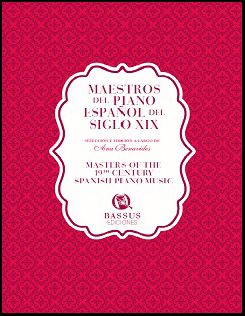 Masters of the 19th Century Spanish Piano Music
Masters of the 19th Century Spanish Piano Music
Compiled and Edited by Ana Benavides
Print Edition, 98 pages, paperback, $24.99
Ana Benavides is an internationally acclaimed pianist and Steinway Artist who has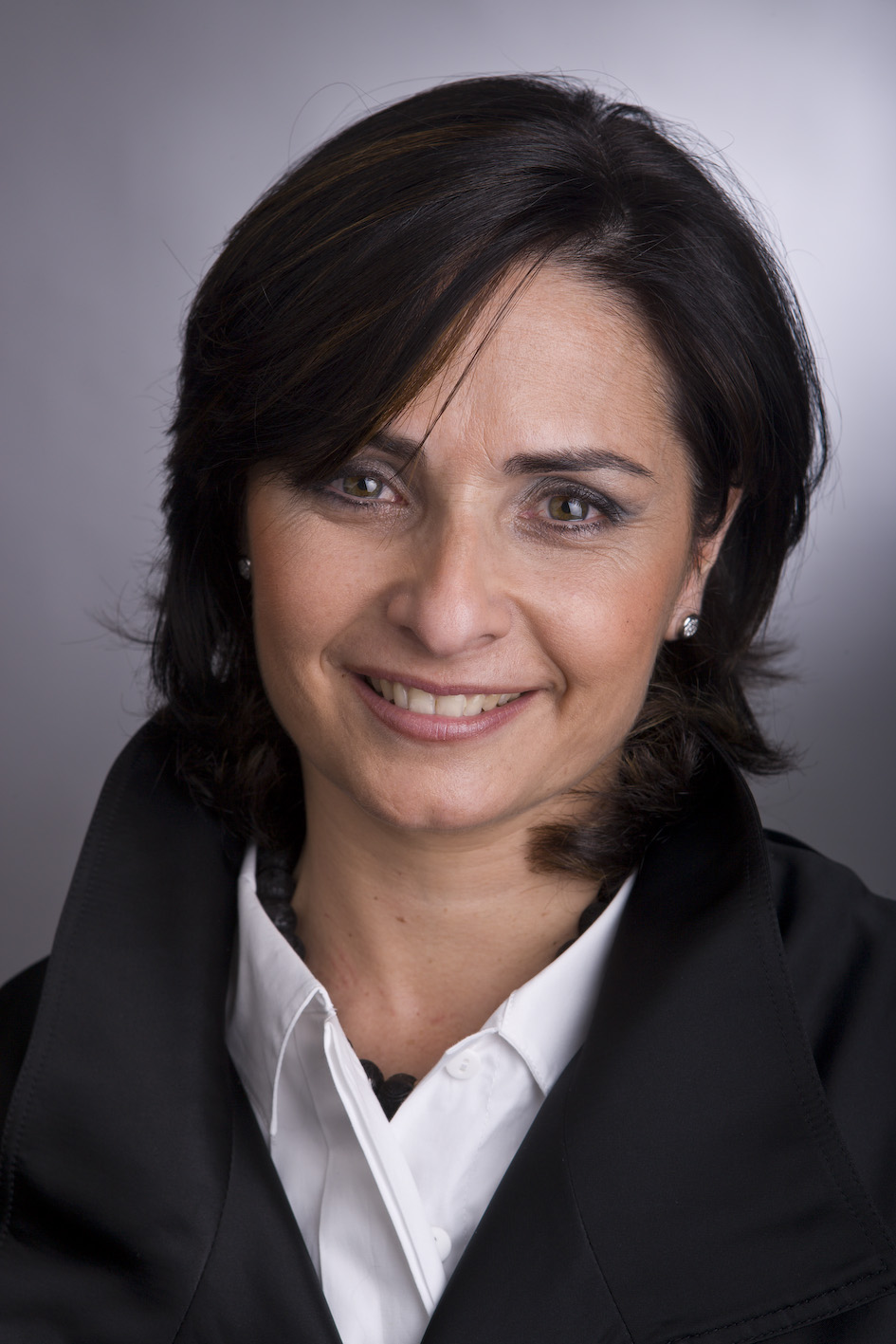
Masters of the 19th Century Spanish Piano Music (copyright © 2014) is a compilation of exceptional but little-known and difficult to find works, all carefully selected and edited by Ana Benavides. The works are rare masterpieces of Spanish piano music that have been rediscovered and reprinted in an edition formatted to facilitate reading by professionals and aficionados at any level. The main objective of this publication is to establish a unifying link between the 18th century Spanish harpsichordists and the great nationalists. This outstanding book, an anthology of piano masterworks written by influential Spanish composers with different styles and posing varied degrees of difficulty for the player, is an essential tool for understanding music in Spain during the 19th century.
Please click to view the following preview pages from Masters of the 19TH Century Spanish Piano Music:
p1, from Sonata by Nicolás Ledesma
p19, from No.10 of José Antonio Santesteban's 24 Preludios, Op.84
p98, index of composers and works included in the book
Masters of the 19th Century Spanish Piano Music was published by Bassus Ediciones and is distributed in the USA by Noteworthy Sheet Music. We sell this book in paperback print edition only, not as a PDF, and only for shipment to addresses within the USA.
To place an order, please use the Contact Us form to tell us which of NSM's print edition publications you would like to order, and include your email and USPS mailing addresses in the message. We will then send you a PayPal invoice for your purchase, which will include a small shipping and handling fee. Once we receive notice from PayPal that you have paid for the publication(s), we will ship your items to the address you provided for delivery in 7-10 business days.
For sales of the book in Europe, please visit www.anabenavides.com.
Benavides - More Masters of 19th c. Spanish Piano Music
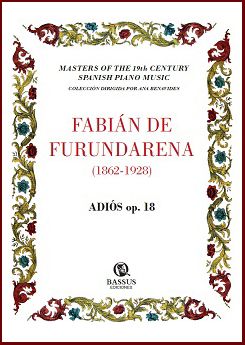 More Masters of 19th Century Spanish Piano Music - Solo Piano
More Masters of 19th Century Spanish Piano Music - Solo Piano
Selected and Edited by Ana Benavides
Solo Piano Pieces, PDF editions
Please see our article on Masters of the 19th Century Spanish Piano Music, a compilation of rare Spanish masterpieces edited by Ana Benavides that is available in print edition only.
Here we offer seven additional difficult to find 19th century Spanish solo piano works, not included in the aforementioned print volume, for sale as individual convenient PDF downloads. Like the pieces included in the Masters book, these works were all carefully selected and re-notated by Dr. Benavides and provide insight into the music and style of several influential Spanish composers of the period.
With the exception of José Antonio Santesteban's Variaciones Sinfónicas which is 4 pages long, the other pieces listed below are short, 2-page piano works, each sold separately.
Ana Benavides is an internationally acclaimed pianist and Steinway Artist who has performed recitals in Europe, Australia, South America, and North America. A regular visitor to international festivals both as soloist and chamber musician, she has maintained a keen interest in rare Spanish piano music of the 19th century. Visit www.anabenavides.com to learn more about Ana Benavides and her work.
Preview
